There are various types of agriculture, including:
1.Subsistence agriculture
This is a type of agriculture where farmers grow crops and raise livestock mainly for their own consumption or that of their families. The surplus is usually sold in local markets.
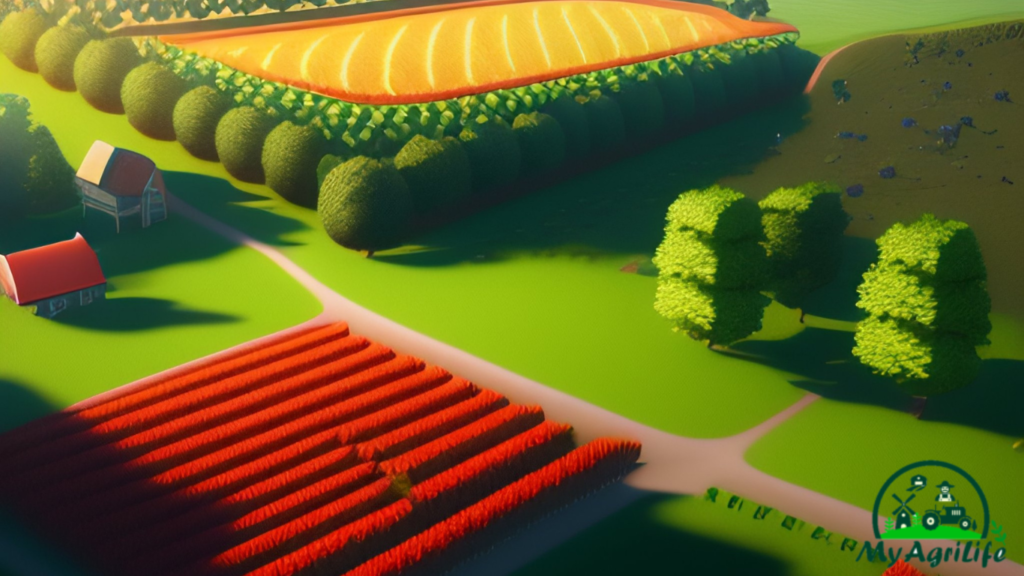
Subsistence agriculture is a type of agricultural system where farmers grow crops and raise livestock mainly for their own consumption or that of their families. It is a self-sufficient farming system that relies on traditional farming methods and limited use of technology and external inputs. The goal of subsistence agriculture is to produce enough food to meet the basic needs of the farming family, rather than for commercial purposes or profit.
Subsistence farming is commonly practiced in rural areas of developing countries, where small-scale farmers have limited access to modern technology, financial resources, and markets. It involves the use of traditional farming techniques such as hand tools, animal-drawn plows, and organic fertilizers, which may not yield high crop yields but can sustain the farmer’s family.
Subsistence agriculture is often associated with low-income families, who rely on it for their daily sustenance. The food produced from subsistence farming is usually consumed by the farmer’s family, and any surplus is sold in local markets or used for barter trade. While subsistence agriculture can provide food security for the farmer’s family, it can also be vulnerable to environmental factors such as drought, pests, and disease outbreaks.
2.Commercial agriculture:
This type of agriculture is mainly focused on producing crops and livestock for sale in national and international markets.
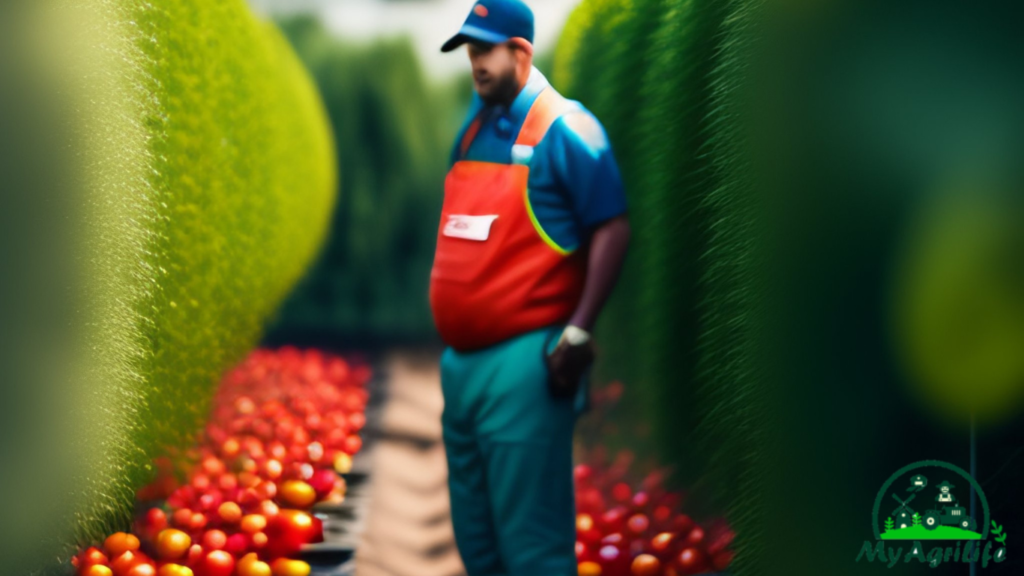
Commercial agriculture is a form of farming where crops and/or livestock are produced primarily for sale in national or international markets, with the aim of making a profit. It is often practiced on a large scale by commercial farming operations that use modern technologies and advanced management techniques to maximize production and efficiency. Commercial agriculture may involve monoculture, where a single crop is grown over a large area, or diversified farming systems, where a range of crops and/or livestock are produced on a single farm.
Commercial agriculture is typically driven by market demand and is often geared towards producing high yields and maximizing profits. This often involves the use of modern technologies and inputs, such as improved seed varieties, fertilizers, pesticides, and irrigation systems, as well as large-scale machinery and sophisticated management techniques. Commercial agriculture may also involve specialization, where farms focus on producing a specific crop or livestock product, such as wheat, corn, soybeans, or beef.
While commercial agriculture has the potential to generate significant economic benefits, it can also have negative environmental and social impacts, such as soil degradation, water pollution, loss of biodiversity, and displacement of rural communities. As a result, there is a growing movement towards sustainable agriculture, which seeks to balance economic, environmental, and social objectives in farming practices. Sustainable agriculture promotes practices that maintain and enhance soil health, reduce the use of chemical inputs, conserve water resources, protect biodiversity, and support local communities.
3.Intensive agriculture
This type of agriculture involves the use of high levels of inputs, such as fertilizer, irrigation, and mechanization, to increase crop yields and productivity.
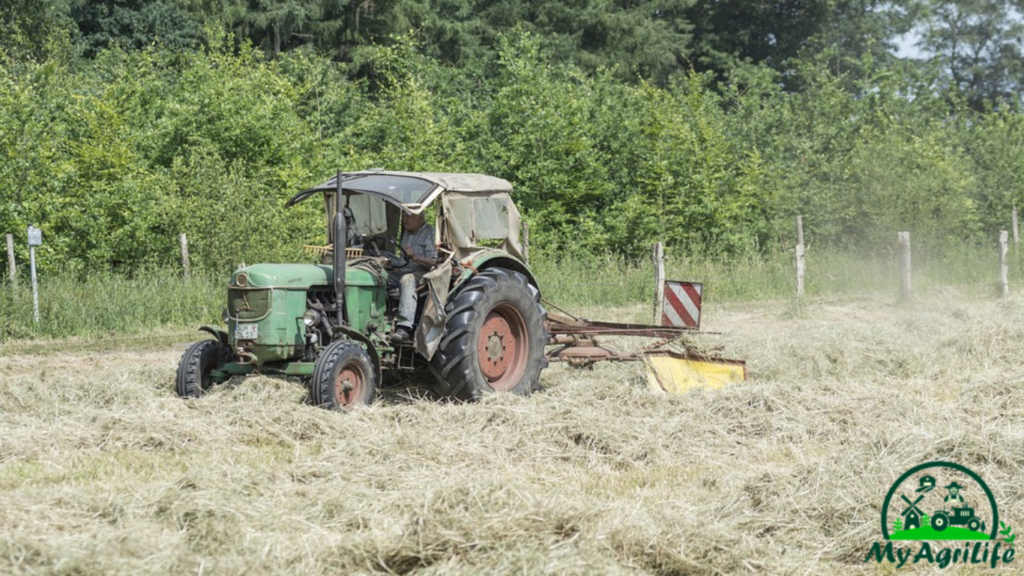
Intensive agriculture is a form of farming where a high level of inputs, such as labor, fertilizer, and technology, are used to maximize production and efficiency. It is often practiced on a large scale and involves the use of modern technologies and management practices to increase yields and profits. Intensive agriculture may involve the use of high-yielding crop varieties, fertilizers, pesticides, irrigation systems, and large-scale machinery.
Intensive agriculture is often used to meet the growing demand for food in the global market and is common in developed countries, as well as in developing countries with rapidly expanding populations. It is often associated with large-scale commercial farming operations that specialize in the production of a specific crop or livestock product.
While intensive agriculture can increase production and provide economic benefits, it also has negative environmental and social impacts. The heavy use of inputs, such as fertilizers and pesticides, can lead to soil degradation, water pollution, and loss of biodiversity. The use of large-scale machinery can also lead to soil compaction and damage to natural habitats. Additionally, intensive agriculture can contribute to the displacement of rural communities and the concentration of land ownership in the hands of a few large-scale commercial farmers.
To address these negative impacts, there is a growing movement towards sustainable and regenerative agriculture practices that promote environmental and social sustainability while maintaining productivity and profitability. These practices include reducing the use of synthetic inputs, increasing soil health and fertility through practices such as crop rotation and cover cropping, and supporting local and regional food systems.
4.Extensive agriculture
This type of agriculture is characterized by low levels of inputs and large land areas per unit of production. It is often associated with livestock production.
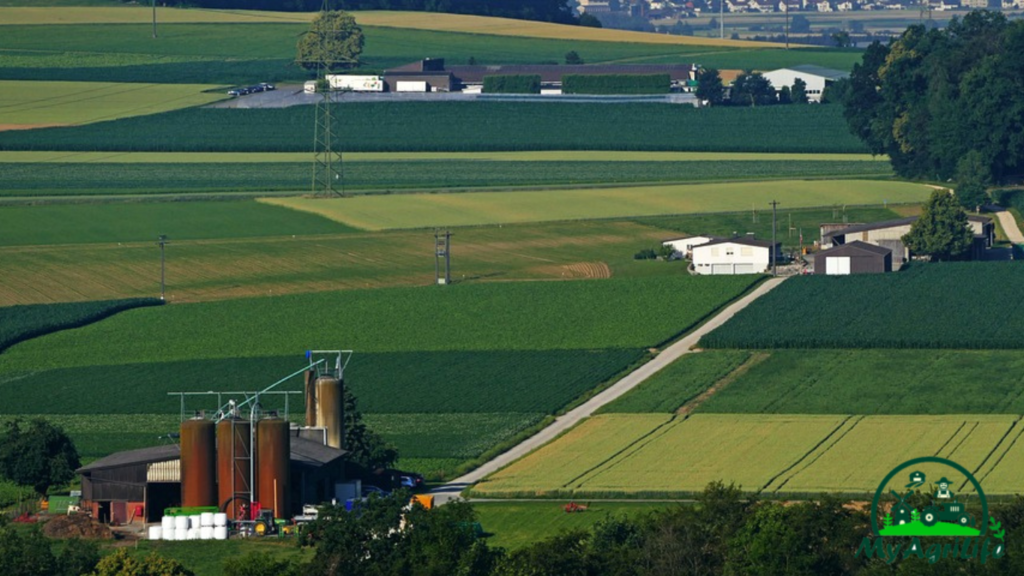
Extensive agriculture is a form of farming where a large amount of land is used to produce crops and/or livestock with minimal inputs and low levels of technology. It is often practiced in areas with abundant land and relatively low population density, such as rangelands, savannas, and forests. Extensive agriculture typically involves low-intensity farming practices, such as low-input crop rotations, pastoralism, and agroforestry, where trees and crops are grown together.
In extensive agriculture, farmers rely on natural resources, such as rainfall, sunshine, and soil fertility, rather than on synthetic inputs, such as fertilizers and pesticides. As a result, extensive agriculture often requires a large amount of land to maintain productivity. Livestock is also an important component of extensive agriculture, with pastoralism being a common form of extensive livestock farming. Pastoralism involves the grazing of livestock on natural grasslands or rangelands, rather than in feedlots or confined spaces.
While extensive agriculture is often associated with lower levels of productivity and economic returns compared to intensive agriculture, it can have significant environmental benefits, such as preserving biodiversity, reducing soil erosion, and improving soil fertility. It can also support the livelihoods of rural communities and promote food security in areas where other forms of agriculture may not be viable.
However, extensive agriculture can also have negative environmental impacts, particularly when it involves the conversion of natural ecosystems, such as forests or grasslands, into agricultural land. This can lead to deforestation, loss of biodiversity, and degradation of soil fertility. Overgrazing by livestock can also lead to soil degradation and desertification in arid regions. Therefore, sustainable management practices are essential for minimizing the negative impacts of extensive agriculture on the environment and ensuring the long-term viability of farming systems.
5.Organic agriculture
This type of agriculture involves the use of natural methods and inputs, such as compost and crop rotation, to produce crops and livestock.

Organic agriculture is a form of farming that emphasizes the use of natural inputs and techniques to produce crops and/or livestock. It is based on the principles of ecological sustainability, biodiversity, and the preservation of natural resources. Organic agriculture aims to minimize the use of synthetic inputs, such as pesticides and fertilizers, and promote practices that enhance soil fertility, biodiversity, and the natural ecosystems that support agriculture.
Organic agriculture involves a range of practices, including crop rotation, cover cropping, composting, and the use of natural pest management techniques. Livestock in organic farming systems are typically raised with access to outdoor areas, fresh air, and natural feed, and are treated without the use of antibiotics and growth hormones.
Organic farming has gained popularity in recent years due to increasing concerns about the environmental and health impacts of conventional agriculture. Organic farming practices have been shown to promote soil health, reduce water pollution, and increase biodiversity. Additionally, organic food is free from synthetic pesticides and fertilizers and is often perceived as healthier and safer by consumers.
However, organic agriculture also has its challenges. Organic farming practices may require more labor and time compared to conventional farming, and yields may be lower. The cost of organic inputs, such as organic fertilizers and natural pest control products, may also be higher. Additionally, the certification process for organic agriculture can be complex and costly, which may limit the participation of small-scale farmers in organic farming.
Despite these challenges, organic agriculture continues to grow, and there is a growing movement towards agroecology and regenerative agriculture, which combines organic farming practices with principles of soil health, biodiversity, and ecosystem services to promote sustainable and resilient farming systems.
6.Mixed farming
This type of agriculture involves the integration of crop production and livestock farming on the same farm.
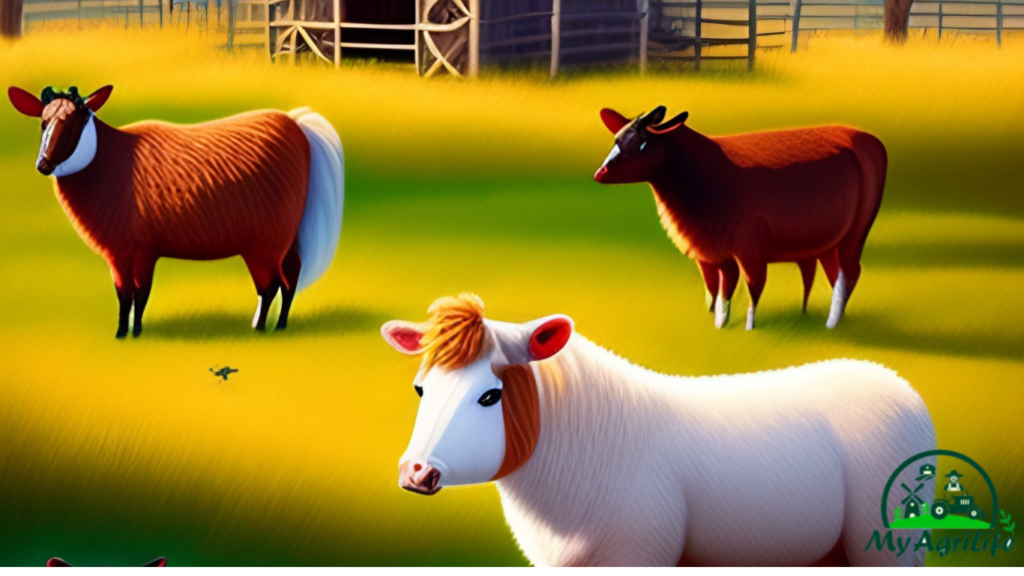
Mixed farming, also known as mixed-crop-livestock farming, is a form of agriculture where farmers combine crop cultivation and livestock rearing on the same piece of land. In mixed farming, crops and livestock are interdependent and are used to support each other. For example, crop residues and manure from livestock can be used as a natural fertilizer for crops, while the crops can provide feed for the livestock.
Mixed farming can take different forms depending on the region and the availability of resources. In some areas, mixed farming may involve small-scale subsistence farming with a few animals, while in other areas, it may involve larger-scale commercial operations. Mixed farming can be practiced in both developed and developing countries, and can provide a range of benefits, including:
Diversification of income: Farmers who practice mixed farming can benefit from diversifying their income streams by having both crop and livestock products to sell.
Soil fertility: Crop residues and manure from livestock can be used to improve soil fertility, leading to higher crop yields and reduced need for synthetic fertilizers.
Efficient use of resources: Mixed farming can make efficient use of resources, such as land and water, by integrating crop and livestock production on the same piece of land.
Risk management: Mixed farming can help farmers manage risks associated with climate variability and market fluctuations. For example, if a crop fails due to drought, farmers can still rely on income from livestock.
Mixed farming can also have some challenges, including the need for specialized knowledge and management skills for both crops and livestock, and the potential for disease transmission between animals and crops. Additionally, the costs associated with maintaining both crops and livestock can be higher than those associated with single-crop or single-livestock farming systems.
Overall, mixed farming can be a sustainable and resilient form of agriculture, particularly in regions where resources are limited and farmers need to maximize the productivity of their land.
7.Agroforestry Farming
This type of agriculture involves the integration of trees and crops or livestock on the same farm.

Agroforestry is a form of farming that combines trees with crops and/or livestock on the same piece of land. It involves intentional and managed interactions between trees, crops, and/or animals, with the goal of creating a more productive and sustainable farming system. Agroforestry systems can take many forms, depending on the specific context and objectives of the farmer, but some common examples include:
Silvopasture: This involves combining trees with pasture or other livestock production systems. The trees provide shade, shelter, and food for the animals, while the animals help to manage weeds and pests and can provide manure to improve soil fertility.
Alley cropping: This involves planting rows of trees in between rows of crops, such as corn or beans. The trees provide shade and help to conserve soil moisture, while the crops provide food and income.
Forest farming: This involves growing crops and/or raising livestock under a forest canopy, or mimicking forest ecosystems. This can include cultivating non-timber forest products, such as mushrooms or medicinal plants.
Agroforestry can provide a range of benefits, including:
Improved soil health: Trees can improve soil structure and fertility, reduce erosion, and enhance nutrient cycling.
Increased biodiversity: Agroforestry systems can provide habitat for wildlife and promote biodiversity on the farm.
Climate change mitigation and adaptation: Trees can sequester carbon and help to mitigate climate change, while agroforestry systems can be more resilient to climate change impacts, such as droughts or floods.
Diversification of income: Agroforestry systems can provide multiple sources of income, including crops, livestock, and forest products.
However, agroforestry also has its challenges, including the need for specialized knowledge and management skills, potential competition between trees and crops for water and nutrients, and the potential for pests and diseases to spread between crops and trees.
Overall, agroforestry is a promising approach to sustainable farming that can help to address a range of environmental, social, and economic challenges.
8.Aquaculture Farming
This is a type of agriculture that involves the farming of aquatic animals and plants, such as fish, shrimp, and seaweed.

Aquaculture farming, also known as fish farming, is the practice of cultivating fish and other aquatic organisms under controlled conditions. Aquaculture can take place in freshwater or saltwater environments and can involve a range of species, including fish, shellfish, and aquatic plants.
There are different types of aquaculture systems, including:
Pond culture: In this system, fish are raised in ponds or tanks that are constructed in the ground. Water quality, temperature, and feeding are closely monitored to optimize growth and productivity.
Cage culture: In this system, fish are raised in cages or nets that are suspended in a body of water, such as a lake or ocean. Water quality and feeding are managed, and the cages or nets are moved periodically to avoid pollution and disease.
Raceway culture: In this system, water is continuously circulated through a series of narrow channels, called raceways, where fish are raised. The water is filtered and treated to maintain good water quality.
Aquaculture farming can provide a range of benefits, including:
Increased food production: Aquaculture can provide a reliable source of protein and other nutrients, particularly in areas where wild fish stocks are depleted or overfished.
Job creation and economic development: Aquaculture can create jobs and stimulate economic growth, particularly in rural areas where other job opportunities may be limited.
Environmental benefits: Some forms of aquaculture, such as integrated multi-trophic aquaculture, can have positive environmental impacts by reducing pollution and nutrient runoff, and by using waste from one species as feed for another.
However, aquaculture also has its challenges, including the potential for disease outbreaks, water pollution, and genetic impacts on wild fish populations. Additionally, the use of antibiotics and other chemicals to manage disease and pests can raise concerns about food safety and environmental impacts.
Overall, aquaculture can be a sustainable and viable form of food production, but it requires careful management and monitoring to ensure that it is environmentally and socially responsible.
9.Urban agriculture
This is a type of agriculture that involves the production of crops and livestock in urban areas, such as rooftop gardens and community gardens.

Urban agriculture is the practice of cultivating crops and raising animals within and around urban areas. It can take many forms, from small rooftop gardens to larger community gardens and urban farms. Urban agriculture can provide a range of benefits, including:
Access to fresh, healthy food: Urban agriculture can provide fresh, nutritious produce to urban communities, particularly those in food deserts or areas with limited access to fresh food.
Access to fresh, healthy food: Urban agriculture can provide fresh, nutritious produce to urban communities, particularly those in food deserts or areas with limited access to fresh food.
Access to fresh, healthy food: Urban agriculture can provide fresh, nutritious produce to urban communities, particularly those in food deserts or areas with limited access to fresh food.
Access to fresh, healthy food: Urban agriculture can provide fresh, nutritious produce to urban communities, particularly those in food deserts or areas with limited access to fresh food.
Some common forms of urban agriculture include:
Rooftop gardens: These are gardens that are located on the roofs of buildings, often in urban areas where there is limited space for traditional gardens.
Community gardens: These are gardens that are collectively managed by a group of people, often in urban areas where there is limited access to land.
Urban farms: These are larger-scale farms that are located in urban areas and may produce a variety of crops and livestock.
However, urban agriculture also has its challenges, including the potential for soil contamination, limited space and access to water, and zoning and regulatory issues. Additionally, urban agriculture may not be financially viable as a full-time business for growers, and may require additional support and funding from government and community organizations.
Overall, urban agriculture has the potential to provide numerous benefits to urban communities, including access to fresh food, environmental benefits, and community building. However, it requires careful planning and management to address its challenges and to ensure that it is sustainable and beneficial to all members of the community.
10.Vertical Farming
Vertical farming is a method of growing crops in vertically stacked layers, using controlled-environment agriculture (CEA) technology. This allows for high-density crop production in urban areas or areas with limited space for traditional agriculture.

Vertical farming systems typically use artificial lighting, environmental control systems, and hydroponic or aeroponic growing techniques. The vertical structure of the farming system allows for efficient use of space and resources, as well as precise control of environmental factors such as temperature, humidity, and lighting.
Some of the potential benefits of vertical farming include:
Increased crop yields: Vertical farming can provide higher yields per unit of land area than traditional farming, due to the ability to stack crops vertically.
Reduced water usage: Vertical farming uses recirculating water systems that can significantly reduce water usage compared to traditional farming.
Reduced transportation costs and emissions: Vertical farms located in urban areas can reduce transportation costs and emissions associated with transporting crops from rural areas.
Year-round crop production: Vertical farms can produce crops year-round, regardless of weather conditions, providing a reliable source of fresh produce.
Reduced use of pesticides: Vertical farms can use integrated pest management techniques and biological controls to reduce the use of pesticides.
However, vertical farming also has its challenges, including the high cost of building and maintaining the infrastructure, the high energy requirements for lighting and environmental control systems, and the need for specialized skills and knowledge to manage the system effectively.
Overall, vertical farming has the potential to provide a sustainable and efficient solution to meet the increasing demand for fresh produce in urban areas. However, further research and development are needed to address the challenges and optimize the technology for maximum efficiency and sustainability.
11.Hydroponic Farming
Hydroponic farming is a method of growing plants in a soil-free, nutrient-rich water solution. In hydroponic farming, plants are grown in a controlled environment, typically indoors or in a greenhouse, using a range of systems and techniques. Some common types of hydroponic systems include:
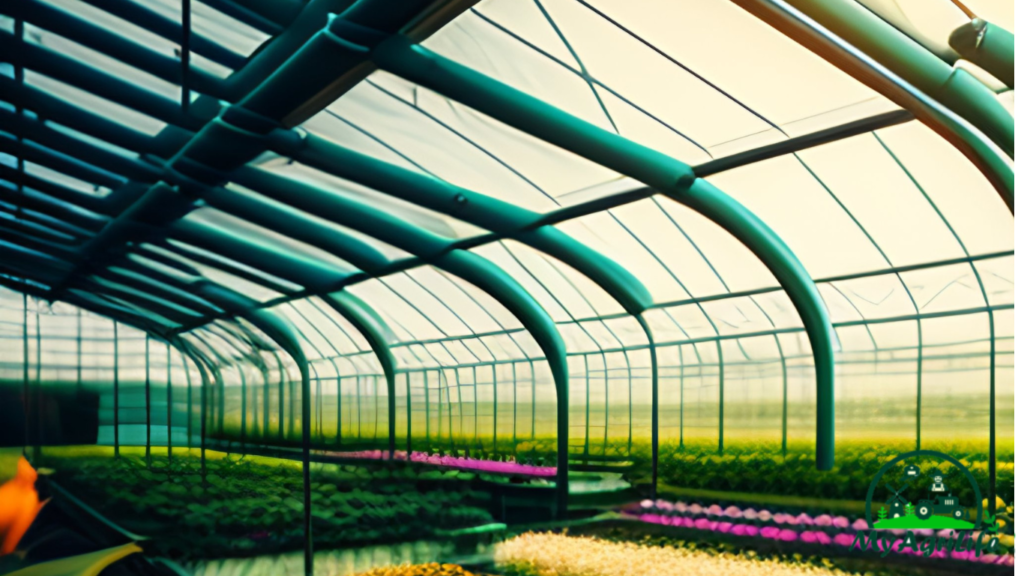
Deep Water Culture (DWC): In this system, plants are suspended in a nutrient-rich solution with their roots submerged in the water. Air stones or diffusers are used to oxygenate the solution, providing the roots with the necessary oxygen.
Nutrient Film Technique (NFT): In this system, a thin film of nutrient solution flows over the roots of the plants in a shallow, sloping channel. The roots are exposed to the solution and receive the necessary nutrients.
Drip Irrigation: In this system, nutrient solution is dripped onto the base of the plants, providing the necessary nutrients and water.
Hydroponic farming offers several advantages over traditional soil-based farming, including:
Improved plant growth and yield: With hydroponic farming, plants receive all the necessary nutrients and water directly to their roots, resulting in faster growth and higher yields.
Efficient use of resources: Hydroponic farming uses less water and fertilizer than traditional farming methods, making it a more sustainable and environmentally friendly option.
Year-round production: Hydroponic farming can be done year-round, regardless of weather conditions, providing a reliable source of fresh produce.
However, hydroponic farming also has its challenges, including the need for specialized equipment and systems, and the potential for disease and pest outbreaks in the closed environment. Additionally, the initial investment for setting up a hydroponic farm can be high.
Overall, hydroponic farming offers a promising alternative to traditional soil-based farming, with the potential to provide a reliable source of fresh produce while reducing the environmental impact of agriculture.
12.Polyhoush Farming
Polyhouse farming, also known as greenhouse farming, is a type of controlled-environment agriculture (CEA) that involves growing plants in an enclosed structure made of transparent materials such as glass or polyethylene.

The polyhouse provides a controlled environment for the plants, with the ability to regulate temperature, humidity, light, and carbon dioxide levels. This allows for year-round cultivation of crops, as well as the ability to grow crops that are not suited to the local climate.
Some of the benefits of polyhouse farming include:
Increased crop yields: Polyhouse farming can provide higher crop yields per unit of land area than traditional farming, due to the ability to control environmental factors and optimize growing conditions.
Reduced water usage: Polyhouse farming can reduce water usage by up to 70% compared to traditional farming, due to the ability to recycle water and regulate irrigation.
Reduced use of pesticides: Polyhouse farming can reduce the need for pesticides, as the enclosed environment reduces the risk of pest infestations and allows for more targeted pest management.
Protection from weather events: Polyhouses protect crops from extreme weather events such as heavy rain, hail, or strong winds, reducing crop losses.
Year-round crop production: Polyhouses can produce crops year-round, regardless of weather conditions, providing a reliable source of fresh produce.
However, polyhouse farming also has its challenges, including the high cost of building and maintaining the infrastructure, the high energy requirements for heating and cooling, and the need for specialized skills and knowledge to manage the system effectively.
Overall, polyhouse farming is a promising method for sustainable and efficient crop production, particularly in areas with extreme weather conditions or limited space for traditional agriculture.
13.Precision Agriculture
Precision Agriculture (PA) is a modern approach to farming that uses technology to optimize crop yields and reduce waste. It involves collecting and analyzing data about crops, soil, weather, and other factors to make informed decisions about farming practices.
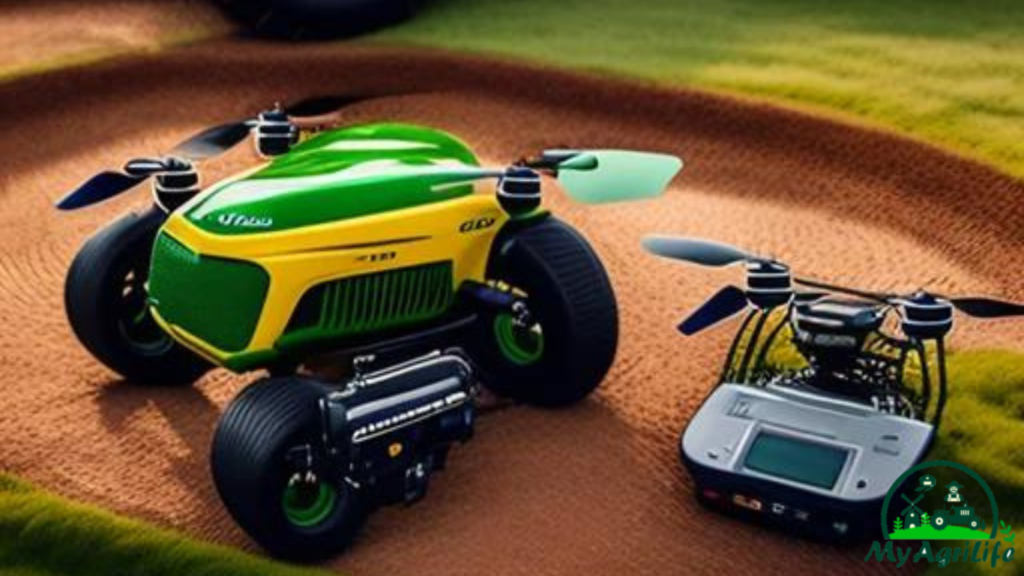
The goal of precision agriculture is to increase efficiency and productivity while reducing the use of resources such as water, fertilizer, and pesticides. This is accomplished by using precision technologies such as GPS, remote sensing, and automated machinery to apply inputs only where and when they are needed.
Some examples of precision agriculture practices include:
Variable Rate Technology (VRT): This involves applying inputs such as fertilizer or pesticides at variable rates based on soil and crop conditions, rather than applying a uniform rate across a field.
Remote Sensing: This involves using satellites, drones, or other sensors to collect data on crop growth, soil moisture, and other factors that can affect crop yields.
Automated Machinery: This involves using machinery such as tractors or sprayers that can be guided by GPS and other technologies to apply inputs precisely and efficiently.
Yield Mapping: This involves using sensors to measure crop yields across a field, which can then be used to identify areas of the field that may require different management practices.
Precision agriculture can help farmers to reduce costs, improve crop yields, and minimize their environmental impact. However, it requires significant investment in technology and data analysis, as well as expertise in agronomy and data science.
14.Arable farming
Arable farming is the cultivation of crops on land. This type of farming involves the use of land, water, and other resources to grow crops for food, fuel, and fiber. Arable crops include grains such as wheat, rice, maize, barley, oats, and rye, as well as vegetables and fruits.
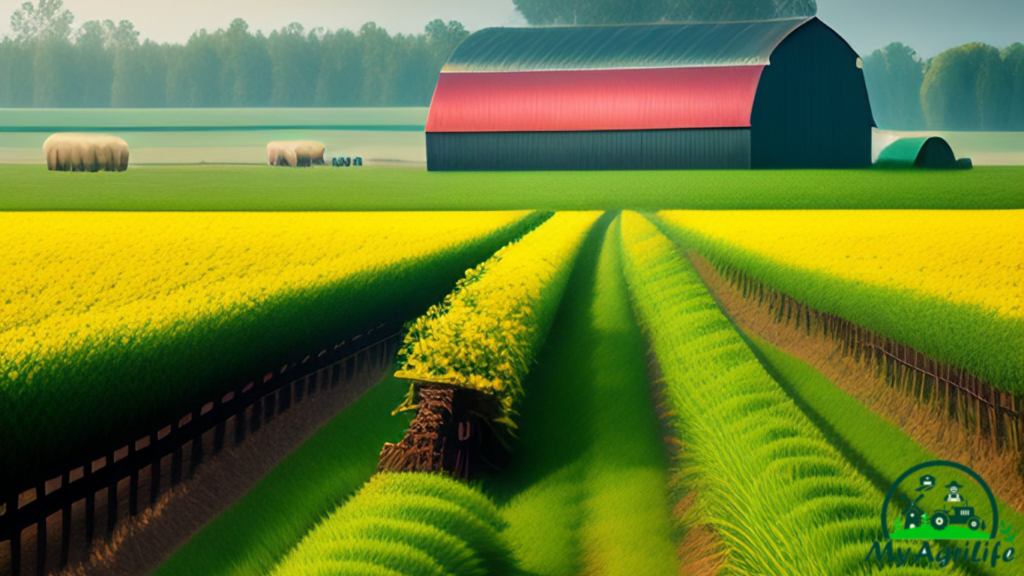
Arable farming typically involves preparing the land by plowing, tilling, and fertilizing to create a favorable environment for crop growth. Farmers use various techniques such as crop rotation, intercropping, and irrigation to maximize the yield of their crops. They may also use pesticides and herbicides to protect their crops from pests and weeds.
Arable farming is a crucial part of the global food system, as it produces the majority of the world’s food. It is also an important source of income and employment for farmers and their communities. However, arable farming can have negative impacts on the environment, such as soil degradation, water pollution, and loss of biodiversity, if not managed sustainably.
15.Pastoral farming
Pastoral farming is a type of farming that involves the rearing of livestock, such as cattle, sheep, goats, camels, and horses, primarily for their meat, milk, wool, and other products. Pastoral farming is practiced in regions where the climate and vegetation are suitable for livestock rearing, such as grasslands, savannas, and deserts.

Pastoral farmers use various techniques to manage their herds, such as rotational grazing, where they move their animals from one grazing area to another to allow the vegetation to recover, and selective breeding to improve the quality of their animals. They may also provide supplementary feed and water during times of drought or scarcity.
Pastoral farming is an important source of food and income for many communities around the world, particularly in developing countries. However, it can also have negative environmental impacts, such as overgrazing, soil erosion, and loss of biodiversity, if not managed sustainably. Therefore, there is a need for sustainable practices that balance the needs of the animals, the environment, and the livelihoods of pastoral communities.









